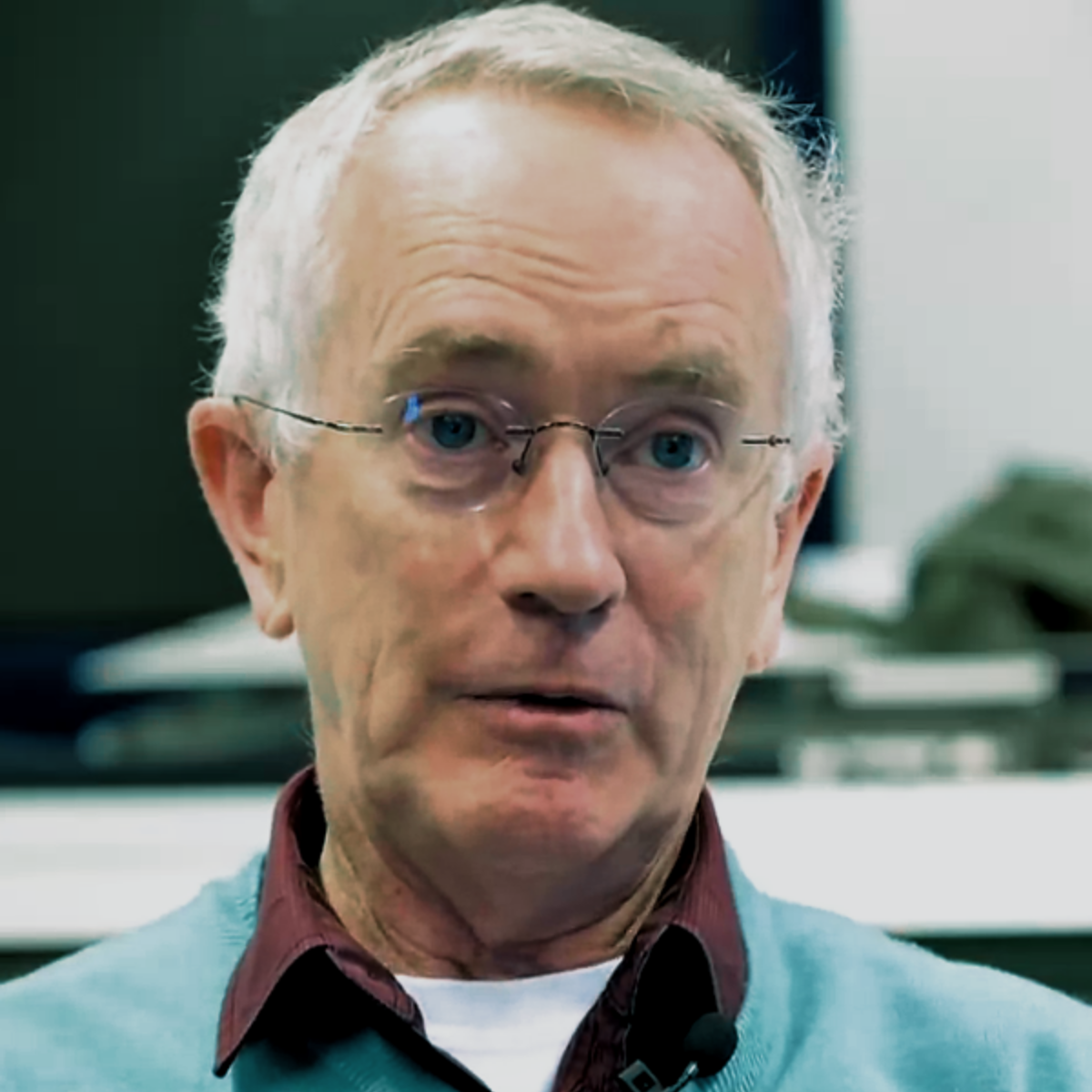Is fusion getting closer?
Energy crisis proves the need for renewables
Keen is keen on printing money, and the Australian Senate
Foundation is on the tele
Sir Clive Sinclair his time and legacy
Can AI and Renewables save China from its credit bubble?
Universal Basic Income, how much and how to fund it?
Techopian's weekly roundup on some of the key stories covered this week. For those too busy during the week but need something to make them seem informed on Monday morning
Is fusion getting closer?
As a rule of thumb, getting together with others is more productive than splitting up. It is like that with nuclear energy, too — we have been splitting the atom for years, but nuclear fission is expensive and, unlike renewables, doesn't get cheaper when we create more of it. Techopian likes to focus on technologies that follow an exponential function or benefit from convergence or both. Nuclear fission is not an exponential technology.
But adding to the atom — nuclear fusion is altogether more exciting. The trouble is, like a lot of exciting things, it seems to be fiction. They say it is always twenty years away, and so it has been all this writer's life.
Like fission, fusion is not an exponential technology, but the reason is different. Fission isn't exponential because the basic unit from which it is constructed is large — the opportunities for economies of scale are modest.
Fusion isn't exponential because, as a technology, it hasn't even got started. It isn't exponential because it doesn't exist — except in the sun and stars, of course.
But then convergence does create an opportunity; there are reasons to think that things will be different in the 2020s (but more likely the 2030s). The reason is that other exponential technologies might be approaching a level such that when they converge, we are better equipped to create nuclear fusion.
So, as computing power advances, as AI advances, and maybe as quantum computing begins to reach a tipping point, all combined with new super materials, there is an opportunity for convergence between these technologies and nuclear fusion.
There has been a growing number of reports concerning fusion of late.
Here are two examples:
Clay Dumas — a former Chief of Staff and Senior Advisor at the White House under Obama and now a Partner at Lowercarbon Capital, recently Tweeted: "The most underrated climate tech is fusion. I keep hearing, 'it's decades off, won't be as cheap as solar, we just don't need it.' But, it's closer than you think. And when it arrives, limitless, CO2-free, around-the-clock power will be a step function improvement for civilisation."
But these are the words that piqued our interest:
"I don't blame anyone for being sceptical, but a few things worth calling out: 1) wide variety in approaches from teams with diverse technical backgrounds, 2) cheap compute + new computational methods have led to major advances in plasma modelling, 3) materials science advances."
The most underrated climate tech is fusion. I keep hearing "it's decades off, won't be as cheap as solar, we just don't need it." It's closer than you think. And when it arrives, limitless, CO2-free, around-the-clock power will be a step function improvement for civilization.
— Clay Dumas (@claydumas) September 16, 2021
Meanwhile, Ramez Naam, one of the more celebrated advocates of renewables and Futurist and Partner at Prime Movers Lab re-entry, Tweeted: "I'm excited to announce that we at @PrimeMoversLab have led a $15 million seed round into fusion company Focused Energy. Fusion remains a hard problem, but with recent advances in laser-driven ignition, it looks more doable than ever
I'm excited to announce that we at @PrimeMoversLab have led a $15 million seed round into fusion company Focused Energy. Fusion remains a hard problem, but with recent advances in laser-driven ignition, it looks more doable than ever. Read more about why we invested below. https://t.co/dXAsfPoPvB
— Ramez Naam (@ramez) September 23, 2021
If you are cynical about fusion, then you may well be right to feel like that, but there are reasons for optimism; maybe we are approaching the end of the era when fusion is always twenty years away and approaching the era when it really is just 20 years away.
Energy crisis proves the need for renewables
Talking of renewables, the cost of energy is going up. Bottlenecks are cited as the reason, but you don't need to look far to find someone blaming renewables.
There is a snag with the 'renewables are to blame' argument, and that snag is that it is probably wrong. The bottlenecks have more to do with gas supply and Vladimir Putin playing politics as he tries to persuade the EU to give the green light to the Nord Stream 2 gas pipeline.
We spoke to spoke to Matthew Hampshire Waugh, author of Net-Zero, and this is what he told us…

Keen is keen on printing money, and the Australian Senate
The Australian economics professor, Steve Keen, is perhaps the leading authority in the world on printing money. Keen is a Distinguished Research Fellow at the Institute for Strategy Resilience & Security, University College of London and former professor and Head of the School of Economics, History and Politics at Kingston University London. Keen has argued that government spending is essential because money is effectively sucked out of the economy via savings without it.
The professor is what one might call a post-Keynesian and supporter of Minsky's theories of credit cycles.
Keen's ideas are important because if exponential technologies really will create a kind of abundance from fewer labour inputs, then printing money may be essential to avoid one mother of an economic depression.
And Keen is entering the politics game.

Also covered by Techopian this week:
Sir Clive Sinclair his time and legacy
Sir Clive Sinclair, once famous as a boffin who changed the UK computer industry, died on September 16th, aged 81.
The author of this newsletter cut his teeth in the world of business, working in the industry Sir Clive's technology created.
Let's consider his legacy and recall the revolution he sparked.

Can AI and Renewables save China from its credit bubble?
The Great Wall of China never really was that effective. However, maybe it serves better as a metaphor for Chinese isolationism during the period when the West rose to global dominance. From the collapse of the Roman Empire (and maybe before) right to the 18th Century Industrial Revolution, China was the wealthiest country globally (and India was second.)
Many theories abound as to how China lost its position of dominance, but a deliberate policy to shut itself off from the rest of the world has been a factor. A famous letter from the Emperor of China to King George III of England who had requested discussions for a trade treaty illustrates this. The Chinese Emperor said: "I do not forget the lonely remoteness of your island, cut off from the world by intervening wastes of sea, nor do I overlook your excusable ignorance of the usages of our Celestial Empire. I have consequently commanded my Ministers to enlighten your Ambassador on the subject, and have ordered the departure of the mission."
Today, however, the problem is quite different. China is aware of its mistakes in the past, but as it engages with the West, it seems to have caught that most Western of diseases — a credit-based asset bubble.
This is a big deal. The Chinese economy is in trouble, although a 2008 style crash does not seem likely — yet.
China's big hope is to grow out of trouble as it moves up the value chain.
See:

Foundation is on the telly
Isaac Asimov's Foundation books possibly form the most influential science fiction series ever.
The books are set during an era when an Empire has ruled the Galaxy for thousands of years. But psychologist/mathematician and all-around genius Hari Seldon created a mathematical technique for forecasting the future. His method used a vast amount of data and worked off the idea that while individual behaviour is unpredictable, it is possible to predict the overall changes in civilisation.
His theory led to the startling conclusion that the Galactic Empire would collapse within five centuries, that this was unavoidable, but it was possible to prepare such that the recovery from the collapse would be more rapid. (All that from data!)
That's enough of an explanation. The point is, a TV series based on the books is airing on Apple TV. It is a sumptuous production at that. Clearly, Apple has thrown some of its spare cash as the series.
Maybe yours truly has been living under a rock, but since I only became aware that the series was now out there, yesterday, I thought I would share that news with you.
The idea that the future can be predicted in this way, that the future is deterministic, is controversial
But there is a view that history follows a predictable pattern.
Why did civilisation begin in regions on a similar latitude — in China, Indus Valley, Sumer and Egypt. Was that a coincidence, or is there a good reason? Jared Diamond has created a theory to explain the course of history — in one book; he claimed history could be explained by three words — guns, germs and steel.
In this incredibly magnificent YouTube documentary, we watch the story of ancient Sumer. Did civilisation begin there because to use the flooding of the rivers Euphrates and Tigris to the advantage of the local population, large-scale cooperation was required?
Is that why civilisation began in the places where it did begin? Does that make history deterministic?
And that takes us back to China. In his book, Why the West Rules for Now, Ian Morris argued that there is no mystery why the West grabbed China's mantle as the new focus of global power. Look at a map and see how much closer Spain, Portugal, The Netherlands and Britain are to The New World than China.
Neither Diamond nor Morris are quite like Asimov's Seldon, but there are similarities.
Universal Basic Income, how much and how to fund it?
And finally, don't forget to watch our latest video on Universal Basic Income,

Hope you enjoy the newsletter, let us know by emailing info@techopian.com and if you really like it, send it to a friend you really care about.






Related News
The AI revolution is here
Jan 25, 2023
The impossible conclusion about technology becoming less disruptive and why it is so dangerous
Jan 20, 2023
Tech bubble! Are you kidding?
Jan 06, 2023